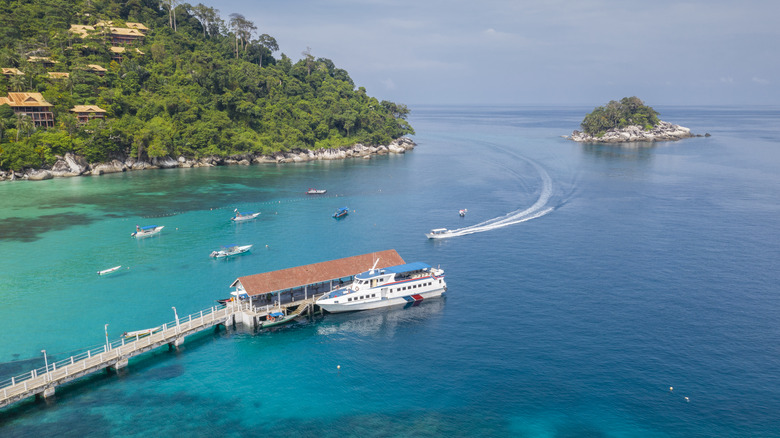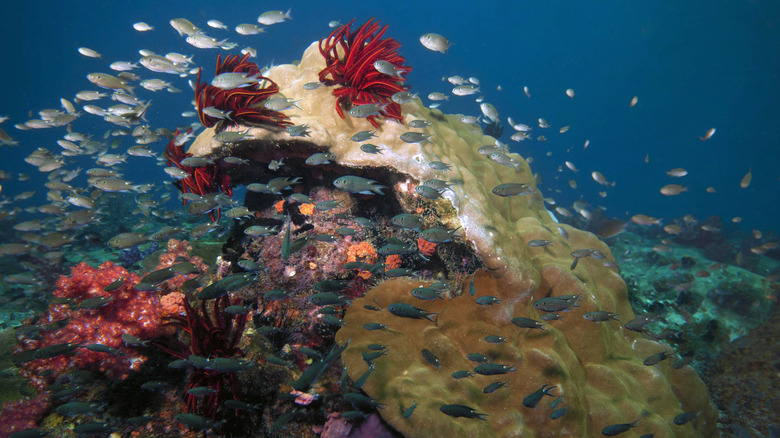Pulau Tioman is home to colorful wildlife and coral
One of Pulau Tioman’s well-known snorkeling and diving locations is Pulau Tulai, or Coral Island. This uninhabited island is just north of Pulau Tioman and is home to colorful species of fish such as angel fish, parrotfish, and moray eel. Docile nurse sharks dwell in the area as well. Aside from vibrant wildlife, divers of all experience levels can enjoy Pulau Tulai due to its water visibility and low currents. Another popular spot for beginners and experts located closer to the main island of Pulau Tioman is Pulau Rengis, or Rengis Island. The shallow water at this tiny, rocky island is perfect for getting close to coral and other marine life.
When spending time in the waters of Pulau Tioman, keep in mind that the area is a designated and protected marine park. What makes Pulau Tioman all the more special for visitors is that they can get involved with conservation efforts. The Juara Turtle Project aims to protect critically endangered sea turtles in the surrounding waters. The company hosts week-long volunteer programs complete with onsite lodging.
Ferries go between the Malay Peninsula and Pulau Tioman

Some resorts on Pulau Tioman offer options to bundle snorkeling or diving excursions with hotel stays. Guests staying at Swiss Cottage Tioman can opt to go to both Pulau Tulai and Pulau Rengis as well as other prime locations like Pulau Soyak and Monkey Bay. Further south along Pulau Tioman’s coast is the Paya Beach Resort, which takes guests to Pulau Rengis. Spring from March through May and Fall from September through November are the best times for water activities in Pulau Tioman.
Getting to Pulau Tioman is simple. Ferries leave from Tanjung Gemuk and Mersing on the east coast of the Malaysian peninsula and dock at multiple locations on Pulau Tioman, including the village of Kampung Tekek (sometimes referred to as Tekek) near Swiss Cottage Tioman and Paya near Paya Beach Resort. Tickets are available online. Keep in mind that monsoon season runs from November through January, limiting ferry trips to once daily rather than three times daily.

